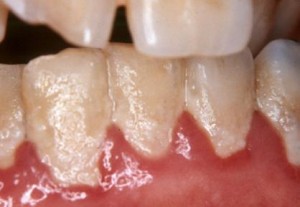A recent interaction with a patient this week reminded me of another interaction with a female patient a couple years ago. For privacy sake I’ll refer to her as Jane.
Jane, a presentable, well-kept 38 year old woman sat down in the dental chair and simply wanted a cleaning. Of course, as every new patient knows, if Jane was to become a comprehensive patient, she would need a full mouth series of radiographs and a complete exam before I could determine what type of cleaning she would need. As it turns out, her oral hygiene was very good. She didn’t have any cavities and only had a few fillings on her lower right back teeth. Jane also showed subtle signs of recession localized only on the right side of her mouth. This finding prompted me to dig deeper. I remembered from her health questionnaire that Jane marked “yes” when asked if she suffered from headaches/migraines. In fact, Jane also took some heavy duty meds to prevent these migraines from starting in the first place.
“Can you remember when you first started getting migraines?” I asked her.
“When I started collage, I guess the stress and pressure set it off.” Jane said
“And can you remember when you got these fillings?” I continued.
“Jeez, I don’t remember….I was pretty young…I guess the end of High School?” She replied. “My parents wanted me to see a dentist before I went away to college.”
Eager to test the theory forming in my head, I reached for the articulating paper (blue and red marking paper). I asked Jane to bite on the paper on both the right and left sides. I also checked how she grinded her teeth, side to side and front and back. With these simple tests I told Jane that her bite was visibly off and this likely was the cause of her recession and possibly her headaches. I asked if I could make a small adjustment with the drill and Jane agreed. It took about 5 minutes to adjust her bite and polish her teeth.
Jane thanked me and checked out at the front.
After two weeks, Jane called the office complaining about the bill she received.
“Why was I charged for something called ‘bite equilibration’? I just wanted a cleaning. I agreed to the exam and x-rays because you said you needed it before you could clean my teeth.” Jane declared.
“The bite equilibration was when I adjusted your bite.” I told her.
“Why was it so expensive? You barely did anything! You were in my mouth for less than 5 minutes. I shouldn’t have to pay for that. I didn’t even ask you to do it. I just wanted a cleaning!” She demanded.
I had to correct her. “I’m sorry, Jane, but what took me only 5 minutes to do in your mouth actually took me 7 years to know how and what to do. Let me ask you though; have you had many migraines since your visit?”
“No, but sometimes I don’t get them for a couple weeks.” She replied.
“OK, I’ll tell you what”, I said. “Pay me what you think is fair.”
I hung up the phone and returned to my work. Approximately 3 weeks later Jane’s bill arrived and was paid in full. She later told me that she had never had a migraine headache again and was able to stop taking the strong medication she previously needed.*
*Migraines can develop from many reasons and can also have unknown causes. This story does not mean that everyone who suffers from migraines needs dental work.


